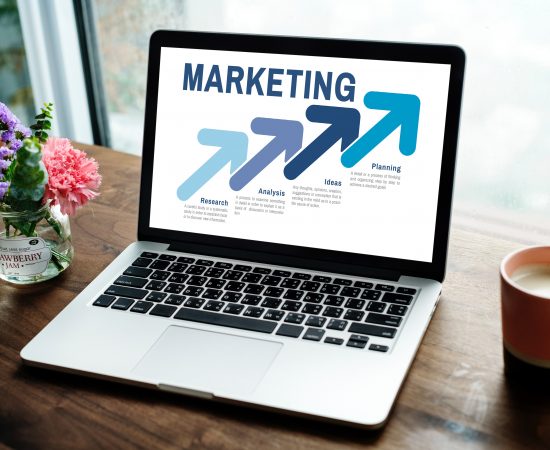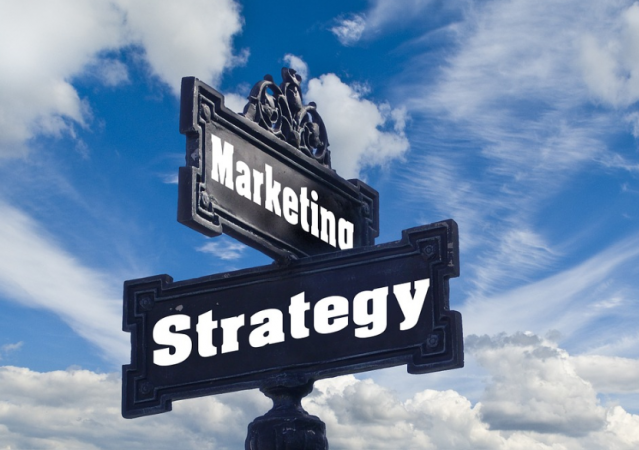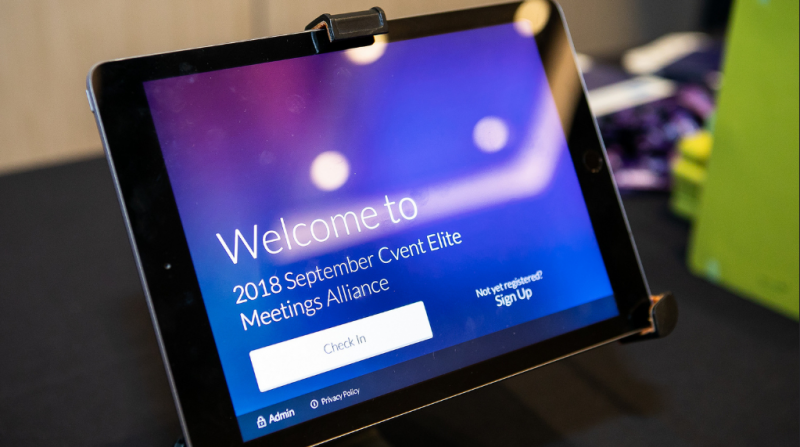What is event planning? How do you do it? What tools should you use to make your life easier?
In this guide, we talk through a basic event planning template, what it means to be a planner, and how event management software can simplify your processes.
What is Event Planning?
It is the process of planning all the details and logistics of an event. That event can range in size, complexity, and purpose. They can be in-person, virtual, webinar or hybrid. It takes a great deal of time and effort to manage an event and involves communication with multiple teams and vendors. Event planning encompasses tasks at all stages of the event cycle, like event marketing, event sponsors, venue sourcing, event branding, building an event website, and more.
Event Management is Event Planning
People tend to call event planning by many different names. Some event planners are called administrative assistants, some are called event coordinators, and others are called event managers. What do all of these titles have in common? The individuals have some hand in planning an event. Whether the events are internal or external, large or small, they all have to be planned.

What is Virtual Event Planning?
Planning a virtual event takes as much time and dedication as an in-person or hybrid event. In recent months, we've had to adjust event programs to incorporate these new event types, adding on a learning curve for planners as they get a feel for virtual event planning. There are so many factors to consider when planning a virtual event. Will this content translate well to a virtual setting? Are my speakers prepared to speak virtually? How will I provide my sponsors the same value as they would receive at my in-person event? How long should my sessions last? And finally, what technology should we use to support this event? Planning a virtual event is made easier with technology, or the use of a virtual event platform such as the Virtual Attendee Hub. With virtual event tech, you can plan smarter.
Read Virtual Event Planning Checklist for more on virtual event planning.
How to Plan an Event
Not sure how to plan an event, or even where to start? Maybe you were recently assigned an event to plan by your manager or you’re just starting out in the field, either way, there are a few basics for how to plan an event. The most important thing to remember is that no two events are the same – just like snowflakes. They’re all unique and have their own purpose. From event type to event size, there is an endless number of factors that change one event from the next. The event planning template below is a rough guide to give you somewhere to start. It doesn’t cover everything – one guide never could – but it will give you the basics.
Building the Perfect Event
It starts simply. A theme. A plan. A goal. Your event has a purpose from the beginning, which will drive content, speakers, and the venue. It’s part of the event management planning process and a key first step.
Wondering how to throw a great virtual event? Check out The Ultimate Guide to Virtual Events.
Event Management Planning Process
While all events are different, there are some universal elements of the event management planning process. Let's dive in.
What Type of Event Are You Planning?
Let’s start simple. Are you planning an internal or external event? An internal event is one within your organization put on for employees. This event could be an appreciation event, a holiday party, training, teambuilding exercise, and more. An external event is one outside of the organization that looks to register attendees. From there, identify if it’s a social event, a networking event, a conference, etc. Start with a great event management plan. What event type is it? In-person, virtual, or hybrid? This will impact the event goals and the planning process.
Define Event Purpose
All events have a purpose. If you haven’t identified yours before you begin planning, then you’re starting off on the wrong foot. Why are you throwing this event? Is it to generate revenue? To launch a product? To educate? Your purpose drives how you plan, market, and execute your event.
Determine Event Size and Duration
How many attendees will attend your event? What will be the event duration? As you decide, think about cost and the purpose of your event. More people mean a larger venue or a higher-cost virtual tech tool, but it could also mean a greater return on investment. Generally, the length of the event is determined by the type of event your throwing. A conference typically lasts a few days, but if this is the first year of the event, you might want to do a two-day event vs. a three-day event to make sure the interest is there.

Event Budget
Create a Budget
No one likes to talk about money. But setting an event budget is crucial–and all stakeholders need to be on the same page. Determine or nail down the event budget as soon as possible as you begin planning. The venue, food, technology, and entertainment are high-price items. There’s a lot to budget for (probably more than you might think) and starting with a clear event budget will make it easier as you plan.
Check out Meeting and Event Budgeting Made Easier for a few tips. Some things cost more than you might think. For example, coffee. Check out Budgeting: How to Estimate Coffee Consumption. Think about ways to incorporate event sponsors into the event.
Meeting and Event Budgeting Made Easier
After the actual event, the event budget is one of the most highly scrutinized aspects of any planning process. Not everyone understands what a successful event looks like or how to determine ROI, but they do understand money. Whether your event budget is small or large, it’s important to know where each dollar is going. If you can’t easily track your event budget and use spend information to analyze an event’s effectiveness and improve year over year, you’re making things more difficult than they need to be.
Event Tech and Event Budget
Event technology has made budget tracking easier than pen and paper or building out a complicated, formula heavy Excel sheet. There are tools you can use, from the Expensify App to more complicated budget tracking solutions, that make collecting, tracking, and analyzing event spend much easier. Curious if your go-to florist is increasing their fee by too high a percent year over year? Check what they charged you the year before! Want to break down costs into categories such as venue, food, promotion, and more? You should be able to, and it shouldn’t take hours of searching in multiple Excel sheets to do it. Read more to find out what budget tracking tools can do for you.
Simple Entry
Keeps things easy. No matter who is entering costs and information, they’ll do it correctly if the budget technology you use is user-friendly. Don’t let complicated Excel sheets create confusion. One of the major challenges with tracking spend is making sure that every single purchase is accounted for. It can take hours and hours to find the missing $2.37, but you’ll spend an afternoon searching for that last item because the event budget has to balance. Use a tool that captures each purchase so you don’t have to root through your purse, car, and office to find a crumpled receipt.
Summary View
A budget overview shouldn’t take hours to pull together. Many budget tracking tools make it possible to create a quick summary view that will show you, and executives, everything they need to know about current spend vs projected spend.
Track Return On Events (ROE)
Look at ROE for one event, or across many events. Tracking ROE will give you greater insight into a singular event or across multiple events. Track budgeted, negotiated, and actual expenses to show their return on objectives and make your next budget even smarter.
Segment By Vendor
You shouldn’t need to spend hours pulling up a history of payment for that one caterer – check easily with budget tracking tools. This will allow you to understand how much you spent with one caterer vs another, or let you to budget better for future events with the same vendors. Negotiate better deals with vendors and suppliers based on transaction history. Did you spend enough with certain vendors to qualify for volume discounts?
Charts And Graphs
People like visuals! Now, tracking tools have graphs built in so you can look at event spend in a more engaging way. You don’t need to spend extra time laboring over a pie chart – it’s created for you. Charts and graphs can usually be modified easily to compare the costs you want to look at.
Use Event Sponsors to Defray Costs
Determining what to spend money on and where to cut isn’t easy. It shouldn’t be even more complicated because of the systems you’re using to track the event spend. Embrace the technology out there! There’s an easier way, and it will lead to less stress, better analysis, and more time to spend actually planning the event. And, think about pulling in event sponsors to take some of the burden off of your budget.

Venue Sourcing
Taking the Mystery Out of Venue Sourcing
How do you typically find a venue for an event? Like a lot of planners, you may start with a Google search. From there, you create a spreadsheet, start to identify criteria, send a few emails, call a few locations, and come up with a solid list of potential venue options. If you're planning an in-person or hybrid event, the venue will be key.
Don't Waste Hours on Venue Sourcing
But how long did that take you? You can lose hours looking at different hotels, conference centers, and unique spaces, and at the end of that search, you may be left with a few hastily scribbled notes on a piece of paper or a partially filled out spreadsheet. The hardest thing to find during this search? The cost. You can sink hours into research, find a great list of five locations, then realize after reaching out that they’re all way out of your price range. That puts you back at square one. That’s only the first step in the long, tiresome venue sourcing process. You still need to create and send out a request for proposals (RFPs), evaluate them, and work through complicated negotiations.
Use Venue Sourcing Technology
It shouldn’t surprise you by now, that my answer to this cumbersome process is simple – event technology. Venue sourcing tools make everything so much easier. What can they do? Provide a searchable database of venues, allow you to compare and contrast venues across the same criteria, easily send out RFPs, and get you set up to do the only thing you can’t do with event technology – go on-site visits. Though with the rise in VR technology, it might even help you do that someday soon. We’ve broken down venue sourcing into simple steps, that when using a great venue sourcing tool, will take the headache out of finding the perfect place to host your next event. Check out the Cvent Supplier Network
Step One: Find Venues
- Know your meeting objectives and requirements. You need to start strong and by determining these at the outset, you’ll decrease the search process.
- Take into account feedback from attendees. Is this an annual event? If attendees ranked the venue from the previous year poorly, look at the feedback to pick a venue that will resonate better.
- Don’t feel alone! Reach out to your team, or others that have a stake in the event to brainstorm what factors are most important.
Step Two: Write the Perfect RFP
- You already know general objectives and requirements – now define your purpose. Make it clear what this event requires and hopes to achieve.
- Get detailed! Give as much information about the event as you can.
- No one likes to discuss money, but you need to share your budget requirements. The venue is one of the largest costs of an event and can make or break your budget.
- Make your deadlines clear. Give a date and time that provide venues enough time to respond.
- Don’t start from scratch. Pull a template from online.
- Be ready to answer any questions venues may have about the proposal or event.
Step Three: Evaluate Proposals
- Create a spreadsheet to assess proposals
- Create a list of any factors that are less concrete – your qualitative factors
- Pay close attention to meeting rooms – do the sizes and layouts make sense for your event?
- Compare how responsive and helpful the venues are to help figure out how helpful they’ll be if you choose them.
Next? Go on some site visits! You should be in great shape at this point. You have proposals, you know that the spaces you’re looking at are within budget and have the spaces you need, now you can look in person.

Event Marketing
Make Event Promotion Strategic
From a full-scale social media takeover to paid ads, event promotion takes many forms. It all depends on your budget, but the purpose of event marketing is to drive attendees to your event. Without attendees, the event wouldn’t exist. Our Event Marketing Plan Template gives an outline of where to begin. Event marketing software can help cut down on the time you spend planning emails and promotions. The most important thing to remember about event promotion is to start early. Create a plan when you begin planning an event and automate it as much as possible. That way, as your event gets closer and you get more in the weeds, you won’t have to remember to post to Facebook or buy ad space.
Need Some Event Marketing Tips? Read our Event Marketing Guide for more event marketing tips.
Promotion Across Channels with Automation
If no one knows about your event, how will they register? That’s why promotion is so important. Targeted email marketing is a great way to promote your events when you have a vast database. Other ways to promote? Social media continues to be one of the best free promotional channels.
Live Events Are Powerful
And they don’t have to be budget drainers–they can actually be big money-makers for your organization. In fact, recent Forrester research shows that successful organizations allocate nearly 25% of their B2B budgets on events, noting that these in-person events are the second most effective marketing tactic. With all this money being earmarked, it makes sense for planners and marketers to join forces and work to increase your ROE (Return on Events) to make events a profit center as opposed to a cost center. Here are a few quick tips on how to get started.
Personalize Invitations to Increase Attendance
Treat your invites like targeted e-marketing campaigns by segmenting audiences by contact type and job role with a clear call-to-action that will resonate with them, getting more people to RSVP.
Increase Your Online Visibility to Create a Goldmine
Employ a user-friendly event registration system to create both an easy online registration process and targeted event website. Any good event management technology will come with the necessary tools to help you easily increase the visibility and traffic to your event website by including SEO keywords–allowing you to track registration form submissions and bulking up your event’s bottom line by providing additional sponsorship opportunities.
Engage at Every Stage
Use social media, viral marketing (videos, pics, contests, teaser campaigns) and promotions to drum up interest before your event. Keep the content flowing and get attendees buzzing during your event with sponsored mobile apps, tweets, posts on Facebook, Instagram, Snapchat and blogs. When all is said and done, offer event recaps, highlights, infographics, photos and videos to your attendees. The goal is to extend the life of your event beyond just the event dates, getting your attendees more invested in your organization. To make it easier, use event marketing software so that you can automate some of your processes.
Be Great and Integrate
Events are a key piece of the marketing mix and therefore your event management system should integrate with your other sales and marketing tech stack and tools such as your CRM system, e-marketing solution, and social media tools. Share data, automate processes, track registrations (and attritions), quickly build reports, measure ROI and save valuable planning time by combining event and marketing tools. By making your events more measurable, you increase your chance at profitability.

Event Branding
The Theme is About Event Branding
The theme goes hand in hand with event purpose. A great theme will attract attendees and connect with the event purpose. Not all themes are created equal. Once decided, the theme will impact decorations, food, entertainment, and more. Remember, it doesn’t just refer to cheesy prom themes, like “A Night Under the Stars.” The theme is the impactful message threaded throughout the entire event, or the branding. Out of ideas? Check out 10 Terrific Themes for Corporate Events.
Read our Event Budgeting Guide.
Event Website
Building a website used to be impossible if you didn’t know how to code. Today, things are much easier. Even if you have no knowledge of HTML, you can build a great website. Which is great news because nowadays, everyone expects there to be a website for everything. Emailed invitations are a thing of the past. Besides being wildly expensive, they’re hard to track and data is easy to input incorrectly. That’s why event websites and registration sites are the new normal when it comes to events.
What’s the Difference Between Registration and Event Websites?
Registration Website
A registration site is built for one thing – registration. Registration sites alone are perfect for smaller events, events that don’t need much promotion or events that have a very low barrier to entry. The purpose of a registration site is to allow an attendee to register easily online and provide you with the data and information you need.
Event Website
A well-designed event website is more dynamic. This website is created for large events, high-cost events, and events that need to capture potential attendee’s attention. The purpose of an event website is to market the event and convince attendees to attend the event. This website can include videos, more information, and lead to a registration site. Not every event will have an event website, but if it has an event website it will also have a registration site. Regardless of the type of site you build, it should be:
- Responsive
- Branded
- Contain all of the event info
- Be accessible and easy to read
How to Detect Problems
Bounce Rates
The higher a bounce rate is, the worse it is. You want a low bounce rate. This means that when a visitor is on your site, they stay and interact for a reasonable amount of time. If bounce rates are high, that means they entered the site and left quickly. Try switching up the original landing page or copy to see if the change helps. When other pages on the site have high bounce rates, try changing those as well.
Abandon Rates
On a registration site, when a visitor fills out part of the registration and then leaves without finishing the form, that’s counted as an abandon. You want visitors to fill the entire form and complete registration. If your abandon rates are high, figure out what questions led to high abandons. Can you do without those? If not, try switching up the order and see what works. For those that already abandoned registration, send them an email (if you have their address) with more information about the event.
Event Management Technology Makes Building a Website Easy
Regardless of the site you chose, you will need one. If building a website scares you – don’t worry. It isn’t hard. Event management technology has made the process incredibly easy. If you can type and drag and drop, you can create a free event registration platform.
Building an Event Agenda
Your entertainment and speakers are the main sources of inspiration at your event. Take the time to source speakers that align with your event theme and overall purpose. The agenda is a great selling point and should be included in your event marketing strategy. Event management software can help you organize a request for speakers and more. Create a robust agenda that will appeal to your attendees. 
Proving Event ROI
Measuring Your Success to Prove Event ROI
Event management doesn’t end when the event does. Over the course of the entire event, it’s important to prove success and identify areas of improvement. Data gained throughout the process will help you do this. Live polling is a great way to find out how attendees felt about the event. Event management software allows you to track attendee data and gather information on engagement, registration, interactions, and more to help substantiate event ROI.
The Essential Drivers of Event ROI
Event Experience
To get a true calculation of event ROI, you need to take a deep dive into both the costs and benefits of running an event. Far more than simply adding up the direct costs to produce an event and the direct revenue it delivers, it’s important to understand the full spectrum of costs and benefits. To help you through this calculation, we’ve outlined the eight essential drivers of event ROI.
Event Costs
Event expenses can account for 25% or more of a company’s B2B marketing budget and internal meetings can add another 3-5%. The total costs needed to actually make events happen requires a closer analysis of expenses at a granular level. Three different costs should be examined.
Direct Costs
These are costs most familiar to event planners. They are the costs of hosting an event. Examples of direct costs include venue costs, food and beverage, travel, entertainment, and rental equipment. Hopefully, you are reconciling your budgets and have a good handle on direct costs.
Indirect Costs
Indirect costs offer a more complete view of the investments to run an event. They include salaries and overhead of the teams involved in staging an event as well as other shared expenses. Indirect costs are calculated using accounting processes such as activity-based costing, which assign attributed costs to products, services, and events. To understand the indirect cost of your event, work with your finance team.
Opportunity Costs
Events have an opportunity cost. Your organization chooses to deploy its resources to an event as opposed to digital marketing, or some other activity. These alternative sources of value comprise opportunity costs. To understand this cost, you need to know the benefits the other activities would yield as compared to your events.
Identifying Benefits
Events can impact the top line and bottom line of an organization. Similar to expenses, it’s important to know how to measure the different types of benefits.
Direct Revenue
Direct revenue is the money made directly as a result of hosting an event. Examples include ticket sales, sponsorship dollars, registration fees, onsite product sales, and advertising revenue. Direct revenue varies based on the size and scope of the event. This is the money you are hopefully calculating today to show the value of your event.
Attributed Revenue
Organizations market and promote their products at events which helps drive future revenue. Onsite product demos and account planning conversations help fill the sales pipeline, fuel new sales, and increase customer renewals. As those new opportunities result in new business, the dollars can be attributed to the event as attributed revenue.
Brand Equity
Some benefits, such as brand equity, are more intangible and cannot be measured through hard dollars. Brand equity doesn’t deliver immediate monetary rewards, but event attendance has an impact on brand attitudes. Consumers like well-known and admired companies, which leads to doing business with that company. Brand equity can help propel Customer Lifetime Value, the long-term profit contribution from a customer. Your events should leave a positive impact on your attendees, driving positive brand equity.
Knowledge Exchange
Knowledge exchange is the accelerated learning that occurs during events. This interaction between customers, prospects and the company can help shape product development, increase learning, fine-tune marketing, and speed receptivity to sales. Your events must create an environment to share knowledge, which leads to brand equity and attributed revenue!

Event Management Software
By now, you should be able to answer the question, what is event planning. And you know that event planning software can cut down the time spent on doing manual tasks. Event management is about pulling together an incredible experience, facilitating connections, adding leads to sales pipeline, and proving event success. It’s a difficult job that involves spinning an endless number of plates and working around the clock to create an unforgettable moment for attendees. And, it’s one that can be made a little easier by taking advantage of technology, especially if you happen to be planning a virtual or hybrid event. A virtual event platform is a gamechanger. While many planners rely on sticky notes and spreadsheets, there’s tech out there that will save hours and take events to the next level. From on-site badge printing to detailed data and analytics to virtual streaming options, event management software can take your event to the next level. Find out what event tech can help you succeed in How to Select the Right Event Management Technology.
Event Planning Checklist
There are so many things to think about when you plan an event. Depending on how long you’ve been planning events, you have different concerns. But, whether you just got thrown into planning or have been planning events your entire life, there will always be unexpected moments. Events, as well as you script them, are unruly. Things never go quite as you plan it. That’s why it’s important to be flexible and willing to adapt. That doesn’t mean you shouldn’t plan as well as you can, though. Below is a quick event planning checklist to keep in mind as you go through your event. Think of this as an event planning template.
Before the Event
Start Early
In most cases, you have the least amount of control over when you can start planning your event. It’s rarely prescribed by you, but by your company, manager, or the company that has hired you to plan. Try to start as early as possible to give yourself the best chance for success.
Set Clear Goals
Each event is an opportunity to improve. Setting goals about what you hope to achieve with this event, whether it’s an increase in attendees, increased attendee engagement, or higher ratings for speakers, is key. Communicating value after the event will ensure
Understand the Purpose of the Event
You know whether you’re planning a conference, gala, or happy hour – but what does this event need to achieve? What is the theme? Figuring this out early will make planning easier in the long run. After all, without this information, you can’t pick a venue, event design, and more.
Identify Resources
How big is this event and is your team large enough to handle it? If your team isn’t, have you determined what contractors you need to hire? By establishing the team this early, you’ll have enough budget to work with and won’t create unrealistic expectations.
Promote Your Event
Take the time to develop a comprehensive event promotion plan. Without the use of email marketing, an event website, social media campaigns, and ads, attendees won’t know that your event is happening. Invest the time and money in promotion to drive registration. And, consider investing in event marketing software.
During the Event
Always Have Coffee
While this does depend on the type of event you have, there is nothing that incurs the wrath of attendees quite like running out of coffee, or worse, not having coffee. If you’re planning a conference, a workshop, talk, or anything that has a number of speakers on the agenda – make sure to keep the coffee coming.
Adapt Speakers and Agenda Content
At some events, you have the ability to adapt based on attendee response. If you’re using a mobile event app during your event and getting speaker ratings, you can easily see who is and isn’t going over well with attendees. If a speaker is poorly rated and they’re going to do the same talk at a different time – change up the schedule. Consider taking that speaker’s session off of the agenda and replacing it with a higher rated speaker. Your attendees will thank you.
Be Ready for Anything
While unnecessary to reiterate, things happen onsite that you could have no way of predicting. Keep your staff office stocked with sewing needles, a first aid kit, and whatever else might be helpful. You have little chance of anticipating a hungry bird with a taste for finer food flying into your event space, but it’ll be your job to figure out how to react.
Sleep!
When you’re onsite, it’s incredibly likely that you’ll forget to sleep. Don’t. Take the time when you can to get a few hours of sleep. Without it, you’ll be off your game and less able to adapt to whatever situations throw themselves your way.
After the Event
Do Something with Your Data
You collected data onsite. In your mobile event app, at the check-in kiosk, during registration, an in surveys. If you don’t already have a plan for how you’ll use that data to prove whether the event met its goals, create one. Data you capture onsite is invaluable. You gain insights into attendees, and potential customers, that most companies can only dream of having access to.
Review Goals and Update Stakeholders
You need to prove event success. Take the time right after the event to identify what went well and what didn’t, then do a deeper analysis into event success using metrics. Your stakeholders will be more impressed if you can speak their language and give concrete results.
Also, read Event Planning Checklists: Avoid Last Minute Crisis at Your Event.





